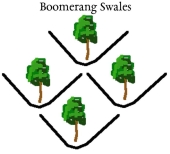
 3
3




"Do what you can, with what you've got, where you are"
– Squire Bill Widener via Teddy Roosevelt
 2
2




 8
8




John Daley Bendigo, Australia The Enemy of progress is the hope of a perfect plan
Benefits of rainfall collection https://permies.com/t/88043/benefits-rainfall-collection
GOOD DEBT/ BAD DEBT https://permies.com/t/179218/mortgages-good-debt-bad-debt




John Daley Bendigo, Australia The Enemy of progress is the hope of a perfect plan
Benefits of rainfall collection https://permies.com/t/88043/benefits-rainfall-collection
GOOD DEBT/ BAD DEBT https://permies.com/t/179218/mortgages-good-debt-bad-debt
 1
1




Liam Hession wrote:I'm learning a lot about how i might divert runoff and do other things to stop rutting long-term. My current takeaway is that i should start at the top of the road and use diversion bunds leading to swales, and other mechanisms to get water off the road before it starts gaining momentum. And observe the road during heavy rainfall to better understand the hydrology.
Invasive plants are Earth's way of insisting we notice her medicines. Stephen Herrod Buhner
Everyone learns what works by learning what doesn't work. Stephen Herrod Buhner
 1
1




"Do what you can, with what you've got, where you are"
– Squire Bill Widener via Teddy Roosevelt




"Do what you can, with what you've got, where you are"
– Squire Bill Widener via Teddy Roosevelt
 1
1




"Do what you can, with what you've got, where you are"
– Squire Bill Widener via Teddy Roosevelt

|
I didn't know this tiny ad could juggle
Support permies and give beautiful gifts to gardeners: permaculture playing cards.
https://gardener-gift.com/
|




